For additional information relating to this article, please contact:
July 22, 2016ANALYSIS OF NOVA SCOTIA'S CONSUMER PRICE INDEX FOR JUNE 2016 In Nova Scotia June 2016, annual inflation of consumer prices (year-over-year growth) was 1.2 per cent, below the national average of 1.5 per cent. Monthly consumer prices rose 0.2 per cent in Nova Scotia, the same pace as the national average.
Within Atlantic Canada, Newfoundland and Labrador (+2.4 per cent), New Brunswick (+1.8 per cent) had higher annual consumer price inflation while Prince Edward Island (+1.1 per cent) had slightly lower annual inflation. Among the other provinces, Quebec had the lowest increase (+0.6 per cent) while Manitoba (+2.1 per cent) and British Columbia (+2.0 per cent) had the highest.

Nova Scotia's annual consumer price inflation (year over year growth in CPI) excluding food and energy rose 2.3 per cent, slightly higher than the change in the national rate (+2.1 per cent). Price level gains for this index were largest in New Brunswick (+3.0 per cent) and British Columbia (2.6 per cent) and lowest in Quebec (+1.5 per cent). On a monthly basis, Nova Scotia's index excluding food and energy increased by 0.1 per cent.
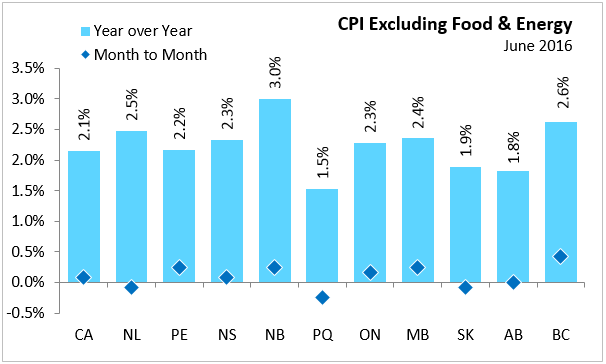
The main contributors to the monthly (June 2016 vs. May 2016) NS CPI movement:
Gasoline (+2.9 per cent)
Purchase and leasing of passenger vehicles (+0.9 per cent)
Footwear (-5.6 per cent)
Men's clothing (-4.6 per cent)
The main contributors to the annual (June 2016 vs. June 2015) NS CPI movement:
Purchase and leasing of passenger vehicles (+5.7 per cent)
Telephone services (+4.2 per cent)
Gasoline (-11.4 per cent)
Fuel oil and other fuels (-16.2 per cent)
The CPI growth for food (year over year) in Nova Scotia was 3.0 per cent with a 0.4 per cent decrease month over month. CPI growth in food (year over year) was highest in Prince Edward Island (+4.0 per cent) and lowest in Quebec (+0.6 per cent) in June. Nationally, food prices posted their smallest year-over-year gain since February 2014, rising 1.3 per cent for June after a 1.8 per cent increase the previous month.
The Nova Scotia energy index was lower by 8.9 per cent compared to a year ago. Energy prices were lower in most provinces compared to June 2015 with the exception of Manitoba and Newfoundland.
Major Components
The following table shows the price increases specific to Nova Scotia for the major components of the CPI this month:
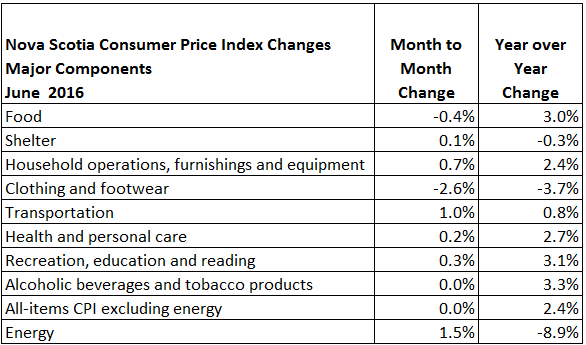
Long Run Trends
The All-Items Consumer Price Index for Nova Scotia has been below the annual rate of the Canadian All-Items CPI rate for the last twenty-five months, with the exception of January 2016 where both year over year indices were up 2.0 per cent. In June 2016, the gap narrowed compared to May's year over price changes, with Nova Scotia inflation growing 1.2 per cent in June and Canada's rate remaining at 1.5 per cent. While month to month movements in the indices can be different, over time they generally follow the same overall trend.
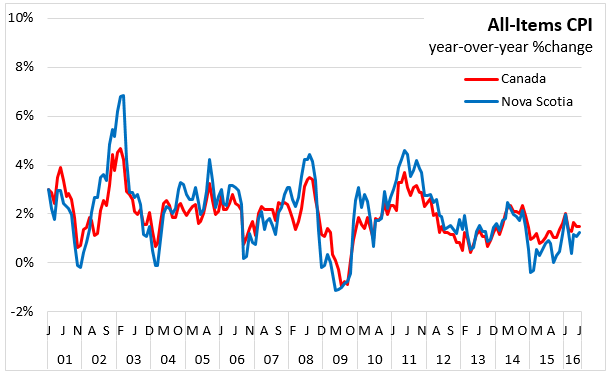
This month's year over year trend in CPI less food and energy shows Nova Scotia's prices excluding food and energy (up 2.3 per cent year over year) rising just above Canada's (2.1 per cent year over year).
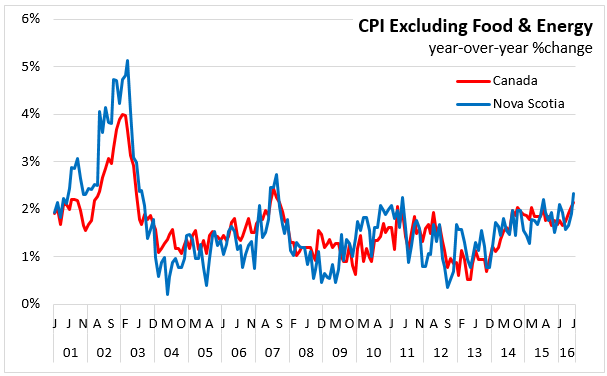
Appendix Tables
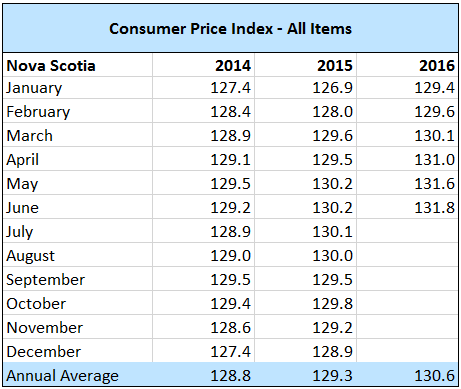

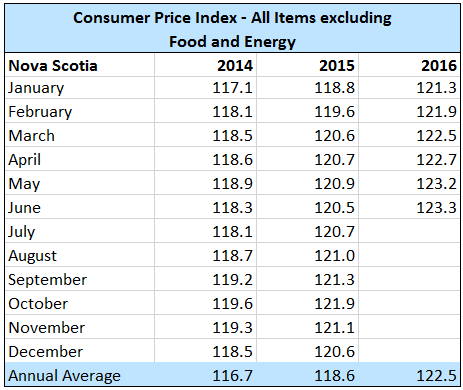
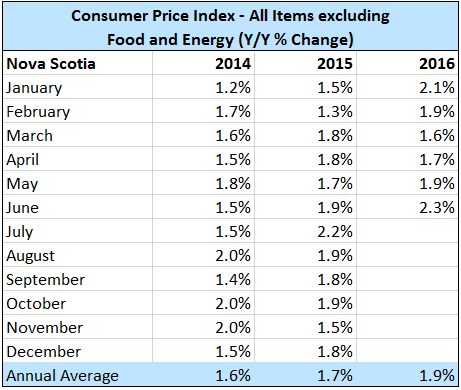
Source: Statistics Canada CANSIM Tables 326-0020